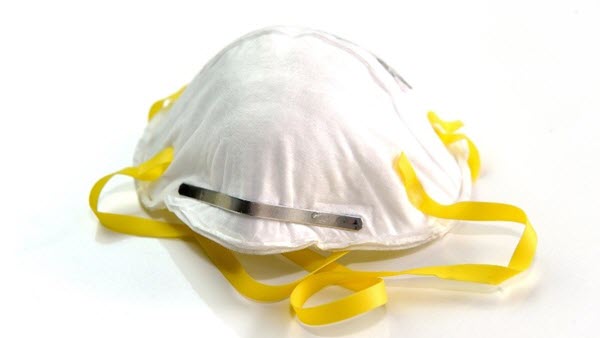Sure, they are saying that NOW, but back in the past, their reasoning was that it was only for the protection of others.They do that REALLY well but they also protect the wearer
From the CDC
Filtration for Wearer Protection
Studies demonstrate that cloth mask materials can also reduce wearers’ exposure to infectious droplets through filtration, including filtration of fine droplets and particles less than 10 microns. The relative filtration effectiveness of various masks has varied widely across studies, in large part due to variation in experimental design and particle sizes analyzed. Multiple layers of cloth with higher thread counts have demonstrated superior performance compared to single layers of cloth with lower thread counts, in some cases filtering nearly 50% of fine particles less than 1 micron .14,17-29 Some materials (e.g., polypropylene) may enhance filtering effectiveness by generating triboelectric charge (a form of static electricity) that enhances capture of charged particles18,30 while others (e.g., silk) may help repel moist droplets31 and reduce fabric wetting and thus maintain breathability and comfort. In addition to the number of layers and choice of materials, other techniques can improve wearer protection by improving fit and thereby filtration capacity. Examples include but are not limited to mask fitters, knotting-and-tucking the ear loops of medical procedures masks, using a cloth mask placed over a medical procedure mask, and nylon hosiery sleeves.31-35
Top of Page
Human Studies of Masking and SARS-CoV-2 Transmission
Data regarding the “real-world” effectiveness of community masking are limited to observational and epidemiological studies.
At least ten studies have confirmed the benefit of universal masking in community level analyses: in a unified hospital system,42 a German city,43 two U.S. states,44, 45 a panel of 15 U.S. states and Washington, D.C.,46, 47 as well as both Canada48 and the U.S. 49-51 nationally. Each analysis demonstrated that, following directives from organizational and political leadership for universal masking, new infections fell significantly. Two of these studies46, 47 and an additional analysis of data from 200 countries that included the U.S.51 also demonstrated reductions in mortality. Another 10-site study showed reductions in hospitalization growth rates following mask mandate implementation 49. A separate series of cross-sectional surveys in the U.S. suggested that a 10% increase in self-reported mask wearing tripled the likelihood of stopping community transmission.53 An economic analysis using U.S. data found that, given these effects, increasing universal masking by 15% could prevent the need for lockdowns and reduce associated losses of up to $1 trillion or about 5% of gross domestic product.47
- An investigation of a high-exposure event, in which 2 symptomatically ill hair stylists interacted for an average of 15 minutes with each of 139 clients during an 8-day period, found that none of the 67 clients who subsequently consented to an interview and testing developed infection. The stylists and all clients universally wore masks in the salon as required by local ordinance and company policy at the time.36
- In a study of 124 Beijing households with > 1 laboratory-confirmed case of SARS-CoV-2 infection, mask use by the index patient and family contacts before the index patient developed symptoms reduced secondary transmission within the households by 79%.37
- A retrospective case-control study from Thailand documented that, among more than 1,000 persons interviewed as part of contact tracing investigations, those who reported having always worn a mask during high-risk exposures experienced a greater than 70% reduced risk of acquiring infection compared with persons who did not wear masks under these circumstances.38
- A study of an outbreak aboard the USS Theodore Roosevelt, an environment notable for congregate living quarters and close working environments, found that use of face coverings on-board was associated with a 70% reduced risk.39
- Investigations involving infected passengers aboard flights longer than 10 hours strongly suggest that masking prevented in-flight transmissions, as demonstrated by the absence of infection developing in other passengers and crew in the 14 days following exposure.40,41
Sure, I could understand that things will change as new science comes out, but this is the cdc, this is ALL they do. They really didn't know, back then, that a mask could protect the wearer? They are just figuring that out now?
Didn't they say that N95 was the really only effective mask? Now they are saying that those cloth masks that people are making at home are effective at stopping viruses?



